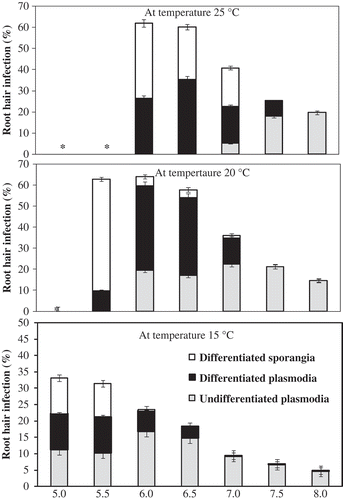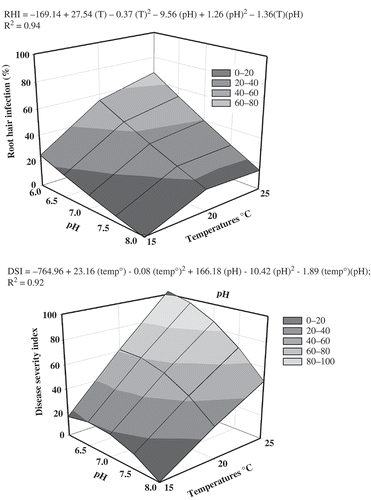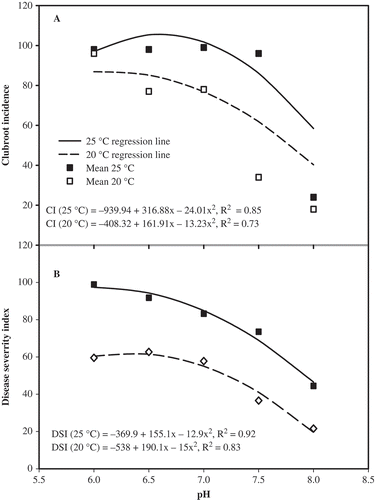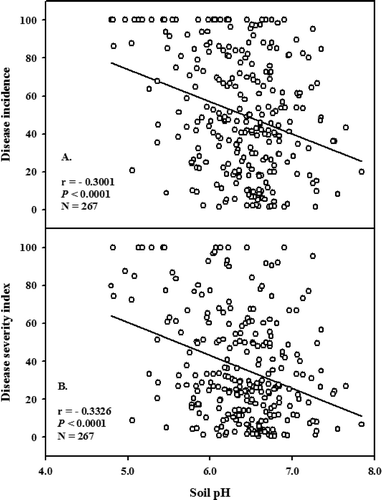Figures & data
Fig. 2. Effect of temperature and pH on the mean proportion of primary plasmodia and sporangia of Plasmodiophora brassicae in root hairs of canola seedlings at 12 days after inoculation (repetition 2 only). Capped lines represent standard error.

Fig. 1. The effect of temperature and pH on root hair infection and subsequent clubroot severity in canola inoculated with Plasmodiophora brassicae under controlled conditions. Only those treatments that were assessed in both repetitions of these studies are presented.

Fig. 3. Effect of pH and temperature on mean incidence (A) and severity (B) of clubroot in canola, and the best-fit regression lines at 20 and 25 °C across two repetitions of the study under controlled conditions. Very little clubroot developed at 15 °C, irrespective of pH.

